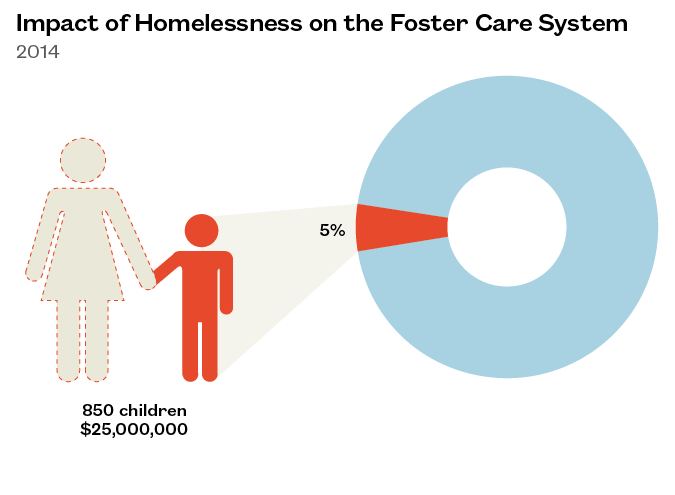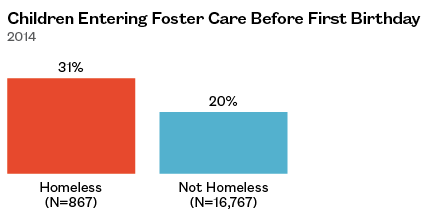a policy spotlight from ICPH
May 2017
Stable, nurturing relationships are critical to a young child’s development and well-being. When children are separated from their parents at an early age, they are at greater risk for mental health problems, developmental delays, and difficulty forming relationships later in life. Children placed into foster care as infants and toddlers are more likely to re-enter foster care and stay in the system longer. There is also a well-established link between foster care and family homelessness—at least one study reports that childhood foster care is 34 times higher for families experiencing homelessness than the general population.1
In New York City, infants and toddlers see the greatest risk of being removed from families who struggle with factors associated with housing instability and homelessness, from underemployment and poverty to additional medical and emotional support needs. This policy spotlight presents data on children placed into foster care from homeless families, highlights the unique support needs of these families, and raises questions about how to better support homeless families so that children are not removed into foster care. The 850 homeless children in foster care cost the City and State approximately $25–$40 million each year2—these data provide an opportunity to explore how we might better use those funds to reduce separations, address the need for parenting assistance, and help families with the underlying reasons that caused their homelessness in the first place.
Housing Instability Places Children in Foster Care
Over 850 New York City children in foster care (or 5% of children in foster care citywide) were removed for reasons including family homelessness.
New York City spends at least $29,412 a year for each child in foster care. That is a total of $25,000,000 or more spent on children in foster care due to homelessness.3
Young Children Are Most at Risk
Children from homeless families are more likely to enter foster care when they are young.
Two-thirds of homeless children in foster care were taken away when they were five years old or younger, compared to less than half of NYC children placed in foster care for other reasons (64% to 46%).
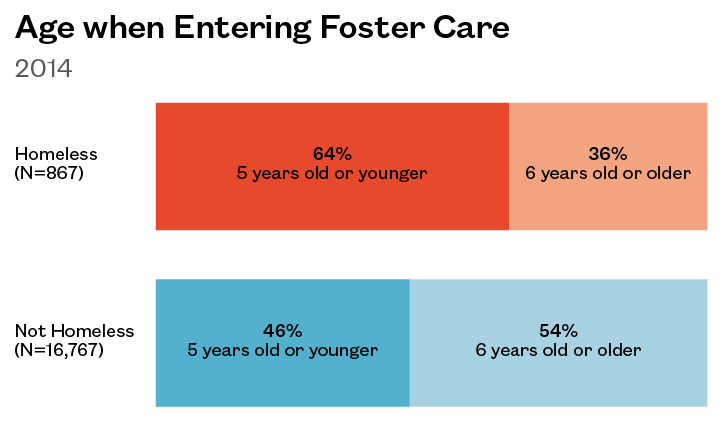
Children Saw the Greatest Risk of Separation at Infancy
1 in 3 New York City children removed from homeless families entered foster care before their first birthday, compared to 1 in 5 housed children in foster care (31% to 20%).
Young Parents Whose Children Were Taken Away Were Likely to Be Homeless
1 in 6 children who entered foster care from homeless families had parents aged 24 or younger, compared to 1 in 10 children who entered foster care for other reasons (16% to 10%).
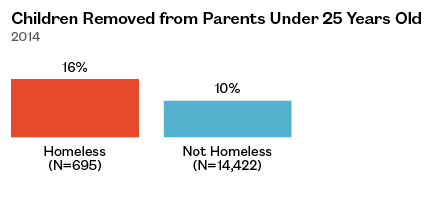
Homeless Families Whose Children Were Placed in Foster Care Have Unique Support Needs
Compared to families who are not homeless, close to two times as many children who were taken away from homeless families had parents who needed support for physical and emotional illnesses/disabilities, alcohol abuse, or substance abuse (51% to 28%).
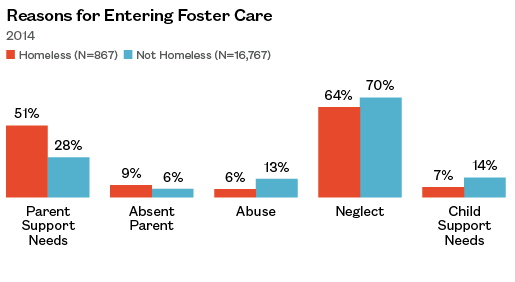
Figure Notes: The majority of children had more than one condition associated with removal; “Homeless” numbers reflect all children who were removed from their families at least in part due to homelessness. “Parent” refers to the child’s primary caretaker. Age of parent is approximate based on their birth year and the year the child was removed. Ns for “Children Removed from Parents Under 25 Years Old” are lower because of missing parent data.
Source: U.S. Department of Health and Human Services, Administration for Children, Youth, and Families, and the Children’s Bureau, Adoption and Foster Care Analysis and Reporting System (AFCARS), accessed through the National Data Archive on Child Abuse and Neglect (NDACAN) at Cornell University, unpublished data tabulated by the Institute for Children, Poverty, and Homelessness, 2014.
